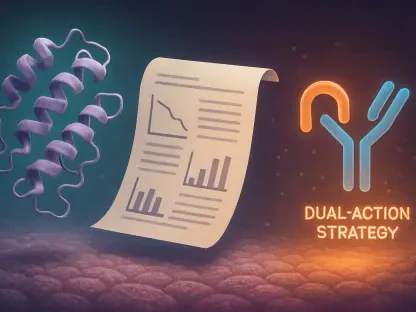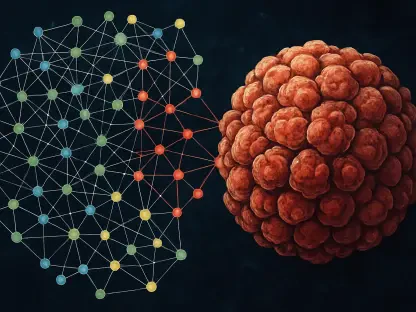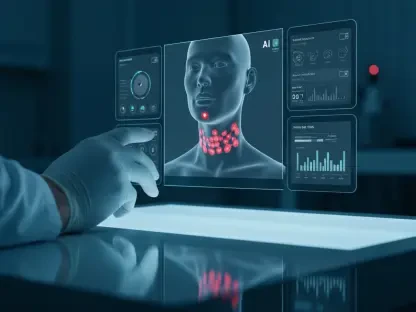Trilobio, a pioneering company in laboratory automation solutions, has made waves at the Society for Laboratory Automation and Screening (SLAS) conference in 2025 with the introduction of its comprehensive whole-laboratory automation platform. This groundbreaking unveiling showcased the platform’s capabilities through data from pilot customers, demonstrating significant advancements in research workflows.
The Vision Behind Trilobio
Founding Mission and Goals
Trilobio was founded with a clear mission: to revolutionize processes in genetic engineering, synthetic biology, and life sciences research. By deploying modular robotic lab automation and an application store, the company aims to address and overcome persistent problems in data quality and reproducibility in biological research. Despite substantial investments in laboratory automation tools, approximately 77% of biologists report difficulties in replicating their own or others’ research. Trilobio’s platform seeks to bridge this gap through commonality and user-friendliness, offering a reliable solution to improve scientific data consistency and replicability.
Addressing Reproducibility Issues
The platform’s architecture is designed to ensure that any research protocol designed and executed on one Trilobio-enabled lab can be reproducibly transferred to another Trilobio lab without needing recalibration or rewriting. This feature is crucial in addressing the reproducibility crisis that has plagued biological research for years. By emphasizing standardized procedures that can be consistently replicated across different laboratories, Trilobio promises a significant enhancement in research reliability. This removes a substantial burden from researchers who often struggle with variations in protocol execution, and it paves the way for more credible and verifiable scientific discoveries.
Platform Architecture and Components
Trilobot and Research Devices
The platform comprises the Trilobot lab robot, various research devices such as grippers, pipettes, and tube handlers, and the Trilobio OS research protocol software. These components work together seamlessly to automate whole lab operations, enhancing both efficiency and reproducibility. The Trilobot serves as the central unit, coordinating tasks across various devices while executing precise and streamlined operations. Its design incorporates flexibility, allowing easy integration with existing lab setups and adaptation to specific research needs. This comprehensive approach allows labs to automate complex protocols without extensive customization or intervention, leading to uninterrupted and efficient workflows.
Trilobio OS Software
Trilobio OS combines protocol design, optimization, and execution with an automated lab notebook and Laboratory Information Management System (LIMS). The no-code graphical user interface (GUI) enables biologists to design research protocols without requiring any coding expertise. Researchers can easily drag and drop elements to create detailed procedures, which the software then executes with exactitude. Furthermore, the software can automatically optimize protocols for speed, cost, or accuracy, making it a powerful tool for researchers. This capability ensures that labs can fine-tune their experiments to align with their specific goals—whether that means maximizing throughput, minimizing expenses, or achieving the highest degree of precision.
User-Friendly Design and Affordability
Intuitive System Design
The system is intended to be highly intuitive, allowing biologists to start using the robots 30 minutes after unboxing and design research protocols within minutes. This user-friendly design is a significant departure from traditional lab automation tools, which often require extensive training and complex configurations to implement effectively. Trilobio’s emphasis on ease of use ensures that researchers can quickly adapt to the new technology and integrate it into their daily routines without significant downtime or disruption. By simplifying the learning curve associated with advanced lab automation, Trilobio makes it possible for even small and understaffed laboratories to leverage these sophisticated tools.
Making Automation Accessible
A notable principle in Trilobio’s design approach is affordability, making it accessible to a broader range of research facilities. By lowering the cost barrier associated with state-of-the-art automation technologies, Trilobio aims to democratize access to these powerful tools. This approach ensures that a wider array of research institutions, including smaller labs and those with limited budgets, can benefit from improved operational efficiency and data consistency. The reduction in cost does not sacrifice functionality or quality, making these advanced technologies practical for daily use in various lab environments, from academic research institutions to biotech startups.
Enhancing Efficiency and Reproducibility
Automating Whole Lab Operations
The platform promises substantial improvements by automating entire lab operations, alleviating common issues that have historically hindered widespread adoption of lab automation. High costs, complex configurations, and extensive training requirements have often posed significant barriers to researchers. Trilobio’s streamlined system overcomes these challenges by providing a cohesive and easily implementable solution. By automating routine and repetitive tasks, the platform frees researchers to focus on creative problem-solving and hypothesis generation, fostering a more dynamic and productive research environment. Overall, Trilobio’s innovative approach transforms the way labs operate, optimizing both time and resources.
Pilot Customer Success Stories
Deployment at several leading biology labs has validated the platform’s effectiveness. Aaron Leconte from the W.M. Keck Science Department highlighted the reliability of the Trilobot in avoiding common automation issues such as dropped pipette tips or delivery errors. Lorenzo D’Amico from Triton Bio cited significant savings in training hours and increased data production, while Monica Schwartz from Abalone Bio emphasized reduced human error and enhanced testing throughput with the Trilobot. These success stories illustrate the platform’s robust performance in real-world settings, showcasing its ability to deliver consistent, accurate, and actionable results across various research applications. The positive feedback from these early adopters supports Trilobio’s claims and helps to bolster confidence in the technology’s transformative potential.
Innovative Software Capabilities
No-Code GUI for Protocol Design
The no-code GUI allows biologists to design research protocols without coding expertise, significantly lowering the entry barrier for using advanced automation tools. By eliminating the need for programming skills, researchers with diverse backgrounds can create detailed and customized experimental procedures quickly and efficiently. This inclusivity ensures that valuable automation technologies are accessible to a broader audience, empowering more scientists to harness the power of automation in their work. The easy-to-use interface also minimizes the possibility of design errors and allows for straightforward adjustments and iterations, enhancing flexibility and responsiveness in research workflows.
Automated Optimization
The software can automatically optimize protocols for speed, cost, or accuracy, providing a versatile and potent tool for researchers aiming to streamline their processes. This capability allows labs to adjust their experimental setups dynamically, depending on their specific goals and constraints. Whether a team is aiming to increase throughput, minimize operational costs, or achieve the highest degree of precision, Trilobio OS can tailor the execution of protocols to meet these requirements. By supporting a wide range of optimization criteria, the software ensures that scientists can achieve their desired outcomes efficiently, ultimately leading to more effective and impactful research.
Future Prospects
Driving Further Innovations
Looking forward, Trilobio appears well-positioned to drive further innovations in laboratory automation. By making sophisticated lab automation tools more accessible and usable for everyday researchers, the company is set to advance science significantly. Their innovative approach continues to attract interest and support from the scientific community, indicating a bright future for the company. Trilobio’s commitment to improving data quality and reproducibility, paired with its focus on user-friendly and cost-effective solutions, ensures that it will remain a leading force in the field of lab automation. As the company develops new technologies and refines existing ones, it is poised to further revolutionize the way laboratories function, enhancing research capabilities across the globe.
Standardizing and Streamlining Lab Protocols
In 2025, Trilobio, a trailblazing firm in the field of laboratory automation solutions, created a significant buzz at the Society for Laboratory Automation and Screening (SLAS) conference. The company introduced an all-encompassing whole-laboratory automation platform that signifies a major step forward in the realm of research workflows. This groundbreaking platform was unveiled in a manner that clearly exhibited its capabilities, primarily through data derived from their pilot customers. The data offered a tangible look at how Trilobio’s platform can transform laboratory operations, enhancing efficiency and precision in research processes. The innovative technology is designed to streamline lab functions, reducing the time and effort required for various tasks, thus allowing researchers to focus more on critical analyses and discoveries. By automating repetitive processes and integrating various lab functions into a cohesive system, Trilobio’s platform represents a leap forward in research. This development could potentially accelerate scientific breakthroughs and set new standards in laboratory efficiency and effectiveness.









